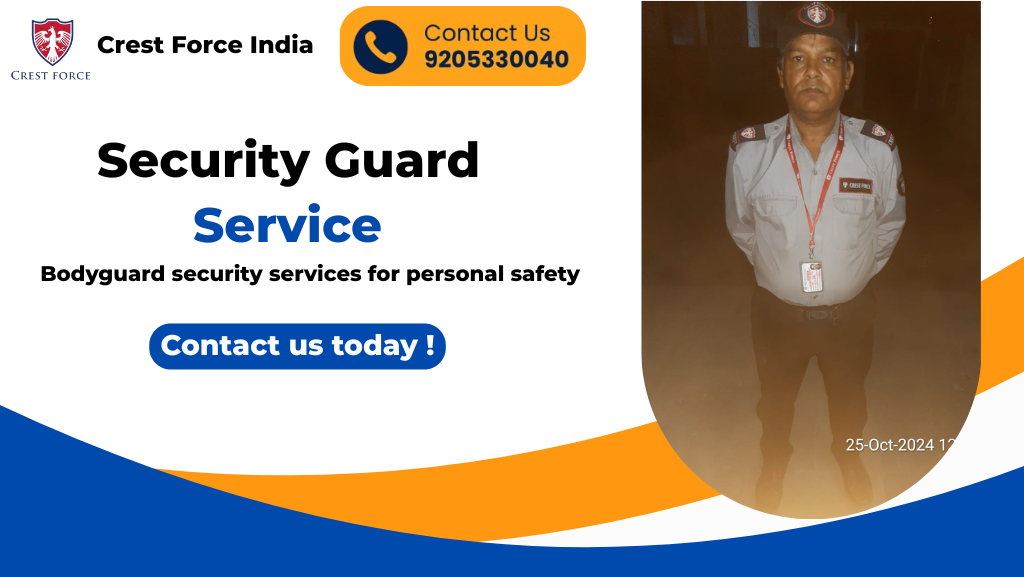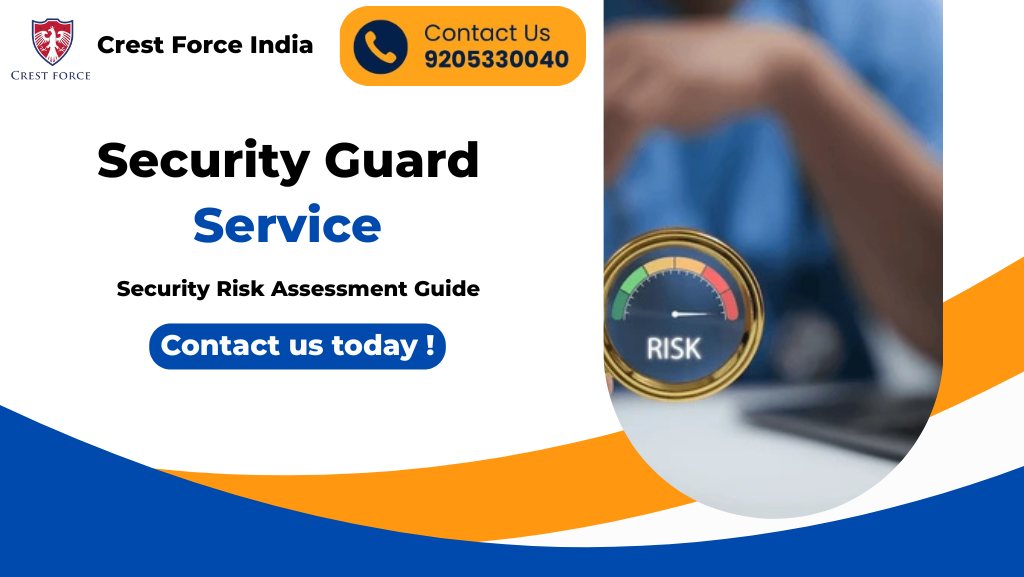As financial crime becomes increasingly sophisticated, Indian banks face challenges on two fronts—fending off physical attacks as well as cyberattacks. Crime is no longer in the business of trying to crack safes; today, it will try to crack digital infrastructure, take advantage of insider entitlement, and execute coordinated hybrid attacks. The regulatory environment is evolving as well, with changing compliance requirements necessitating more robust, more effective safeguards.
To do all of this and more, financial institutions must implement a multi-layered, proactive bank security strategy—one that harmoniously integrates technology and high-quality people. At Crest Force India, we specialise in providing effective security guard service integrated with cutting-edge surveillance systems to protect your branches, employees, and customers against emerging threats. As the year 2025 continues to unfold, securing financial premises is not just a choice—it’s a necessity.
What is Bank Security and Why It Matters in 2025?
Bank security is a blend of physical (e.g., security personnel and guards and access control) and cyber (e.g., firewalls and data encryption) defences at the strategic level. Combined, they shield banking institutions from unauthorised access, data interception, fraud, and physical breach.
In 2025, banks are not only safeguarding cash and personal information but also consumer confidence and compliance. Threats range from skimming at ATMs and phishing to ransomware and insider sabotage. With this changing threat landscape, combined bank security is the foundation of business sustainability.
Also Read: Security Guard Equipment List
Key Elements of a Robust Bank Security System
Physical Security
The physical security of banks continues to be important. A professional bank security guard can function as both a deterrent and a first response. Important tools are:
- Access control systems, such as biometric systems and RFID cards, are used to secure areas.
- CCTV and remote monitoring provide 24/7 surveillance.
- Sturdy branch perimeters with bollards, gate checks, and controlled entry/exit.
Bank Cybersecurity
Whereas physical threats are obvious, digital threats are underhanded. Important defences are:
- Multi-factor authentication (MFA) for employees and customers.
- Role-based access control to restrict system exposure.
- Endpoint protection, encryption, and loss prevention technologies.
- A secure platform enabling mobile and internet banking.
Internal Process Controls
Humans are the weakest link in security. Robust internal processes guarantee accountability and alertness:
- Continuous employee training against social engineering.
- Visitor/vendor tracking for keeping entry records.
- Tracking systems for assets for high-value products and digital assets.
- Whistleblower policies to promote the reporting of suspicious behaviour.
Best Practices in Bank Security in 2025
Perform Regular Security Audits
Regular and surprise audits—penetration testing and compliance auditing according to RBI, ISO 27001, and PCI-DSS annually—are critical to be prepared at all times.
Use AI-Driven Threat Detection
Artificial intelligence is transforming banking security solutions. Facial recognition, behavioural analysis, and real-time anomaly detection now provide predictive warnings of likely threats.
Train Employees Ongoing
Regular mock drills, phishing trials, and refresher training are needed by banks to bolster their human firewall.
Incident Response & Recovery Plan
A tested plan in writing enables rapid containment, investigation, and recovery after an incident, critical for damage control as well as legal requirements.
Align with Regulation
Indian regulations like the RBI’s guidelines on cybersecurity and the new Digital Personal Data Protection Act must be at the centre of any security plan.
Also read: Security Guard Rules and Regulations in India
Physical Security: Still the First Line of Defense
Bank Security Guards’ Role
A bank security guard is the tangible face of security in branches. Armed or as an unarmed guard, they are trained to diffuse tension, keep access points under observation, and coordinate police or emergency services response during a break-in. Integration with surveillance systems increases their effectiveness.
Security Officer vs Security Guard – Key Differences
A security officer usually oversees and makes tactical decisions, whereas a security guard will attend to tasks operationally. Officers can be certified by the state security boards or trained in PSARA in India.
How Crest Force India Secures Banks
At Crest Force India, we provide tailored bank security solutions—from placing a trained, armed guard at vulnerable branches to integrating surveillance solutions with remote monitoring. We also assist banks to hire security guards with background checks, behavioural training, and compliance certifications. Our staff collaborates closely with security officers in banks to ensure asset and personnel safety.
Challenges in Modern Bank Security
New-Age Cyber Threats
Banks are common targets of ransomware, zero-day exploits, and mobile banking attacks. A single moment of weakness in email security can lead to significant data breaches.
Physical Vulnerabilities
ATMs and small branches are easy targets during off-hours or public holidays, and more stringent surveillance and backup power schemes are needed.
Delivering Customer Experience Without Compromise
Security needs to be firm but non-intrusive. Intelligent queue systems, unobtrusive screening, and strategically located signage deliver a welcoming atmosphere.
Digital + Physical = Integrated Banking Security Strategy
- Secure Your Premises: Use CCTV, access control, and an armed bank guard to strengthen the physical front.
- Protect Your Network: Utilise endpoint protection, encrypted servers, and multi-factor authentication to provide digital resilience.
- Safeguard Your People: Establish a culture of awareness through background checks, training, and frequent security briefings.
FAQs on Banking Security
What is the best security solution for banks in India?
A combination of manned guarding, AI-based surveillance, and regulatory compliance is the perfect solution.
What are some responsibilities of a bank security guard?
Patrolling premises, maintaining surveillance over entries, handling emergencies, and providing support to customers on a need-to basis.
What are some cybersecurity threats to banks in the year 2025?
Ransomware, phishing, insider threats, and mobile banking attacks are at the top of the list.
How can private companies like Crest Force India assist?
By providing a thorough bank security—trained staff, CCTV technology, and compliance support, Crest Force India protects all levels.
What makes a bank security officer a good one is alertness, crisis management ability, leadership, and regulatory expertise.
Banking Security in India: What the Future Holds
With blockchain-based transaction records, AI, and biometric authentication becoming the norm, bank security will soon be predictive rather than reactive. RBI is compelling tighter compliance, so it is essential for banks to collaborate with expert agencies. The future will also witness greater private-public partnerships for financial safety across the country.
Conclusion
In the current uncertain threat environment, bank security isn’t a compliance checklist – it’s the foundation of customer confidence and business resilience. Banks need to invest in multilayered systems, well-trained guards, top-of-the-line tech, and smart management. To engage security guards, deploy surveillance, or revamp your branch security, make the right decision today. Let safety be the leader – because when your bank is secure, your customers can sleep tight.
Check Out Our Most Popular Security Guard Services: Residential Security Guard | Female Security Guard | Event Security Guard | Office Security Guard | Industrial Security Guard | Bouncer Guard Service











